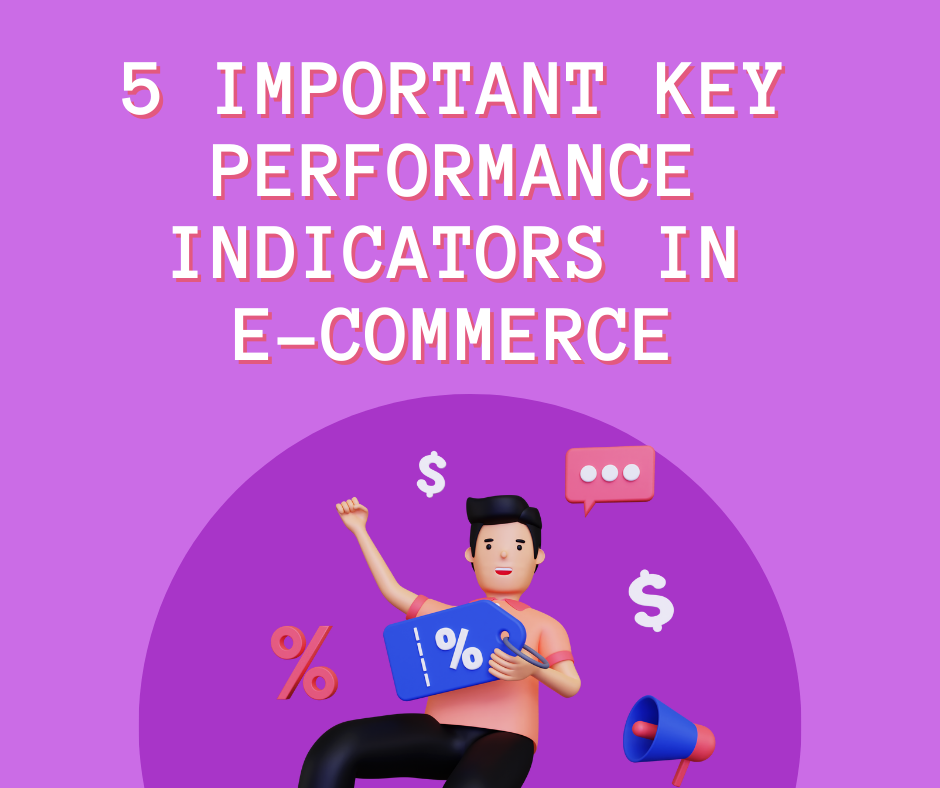What are Key Performance Indicators?
To track the growth of your business, you need to make sure you’re always earning back more than what you’re spending. To do this, you need to take a look at several key performance indicators (KPIs) in your operating expenses.
Key performance indicators are quantifiable measures of your business’s performance over a certain period. They help you establish short-term and long-term goals, motivate you and your workforce to keep working, and provide valuable insights into your products and customers. Without KPIs, you’d just be like a nomad, forever wandering with no home in sight!
The following five KPIs are, in our humble opinion, the most important metrics you need to look at as an e-commerce owner.
Gross Profit (Revenue – Cost of Production and Distribution)
Your gross profit is calculated by subtracting production costs from your total revenue. Production costs include the cost of materials, labor, logistics, and other necessary fees needed to produce and distribute your products.
For example, let’s say you produced $50000 worth of clothes for your online store and spent an additional $10000 on miscellaneous fees like web hosting services and shipping costs. In the end, you gained back $75000 from selling your clothing.
$75000 revenue – ($50000 production + $10000 distribution) = $15000 gross profit
Inventory Level
Inventory level is crucial to managing your business. After all, you can’t produce products or offer services if you don’t have the materials for them! The inventory level should be directly proportionate to the growth of your business—thus, if you plan on increasing sales by 25% next year, then you should increase your inventory level by 25% too.
Managing your inventory level prevents unwanted issues with your business. Too much inventory leads to wasted money that could have been spent elsewhere, extra costs for maintenance like refrigeration and storage, and loss of value due to time-sensitive matters (e.g., buying more fruit than you can sell).
Too little inventory, on the other hand, can cause a loss of reliability with your customers, lack of appeal compared to other competitors with inventory, and higher costs of buying because bulk orders are generally cheaper.
Overall Labor Effectiveness (Performance x Availability x Quality)
Overall labor effectiveness refers to your workforce’s total performance, including well they produce output and perform at work, and how well you manage them.
There are three main aspects of overall labor effectiveness you need to take a look at:
Performance (Actual Output/Expected Output)
This measures how often your workforce produces outputs within a certain time frame.
For example, you own a bakery and expect your assistant baker to frost 1 cake per hour. However, she’s a lot slower than you expected and can only frost 1 cake in an hour and a half. Thus, in an 8-hour shift, she can only frost 5.3 cakes.
Her performance is as follows:
- cakes in one day / 8 cakes in one day = 66.25%
Availability (Actual Time Worked/Expected Time Worked)
This refers to how much time your workforce spends doing a particular task.
For example, you assign a whole 8-hour shift for your assistant baker to make macarons for a client. However, she’s never made macarons before and spends the first 2 hours learning how to make macarons online.
Thus, this is her availability:
8 hours assigned – 2 hours spent learning = 6 hours actual baking time
6 hours baking time / 8 hours expected baking time = 75%
You’d be better off assigning the macaron task to someone more knowledgeable.
Quality (Saleable Output/Expected Output)
This measures the quality of output your labor force produces.
Your assistant baker might not be the best performance-wise or availability-wise, but she sure knocks quality out of the park! Out of the 250 cookies you asked her to make for the day, only 2 came out of the oven too burnt for sale.
248 saleable cookies / 250 expected cookies = 99.2%
Return of Investment [(Value of Investment – Cost of Investment) / Cost of Investment]
Return of investment (ROI) is similar to gross profits but only refers to one product. In a return of investment, you look at how much it takes to produce one product vs. how many of your products and how much your product sells in the end.
ROI is a very important indicator because you can see if continuing to sell a product is worth it or not. You can also use it to check if you can reduce or increase costs—for example, if your customers aren’t buying your product because the price is too expensive for such cheap ingredients, then you can adjust the price.
Cost Variance (Budgeted Cost – Actual Cost)
In business, things are a lot easier said than done. While you can plan and forecast your budget to the very last number, anything from skyrocketing prices and labor shortages can throw a wrench in your well-thought-out plans. Cost variance measures this by analyzing how well you’ve stuck to your budget.
Cost variance can be divided into three: positive (under budget), negative (over budget), and zero.
Cost variance is important because it allows you to see your product or business’s progression. For example, if you have a product that ended up costing more money than usual and a product costing less, then you can allocate some of your budgets from the latter to the former to improve your overhead costs. You can also create more accurate budget projections for similar products in the future.
